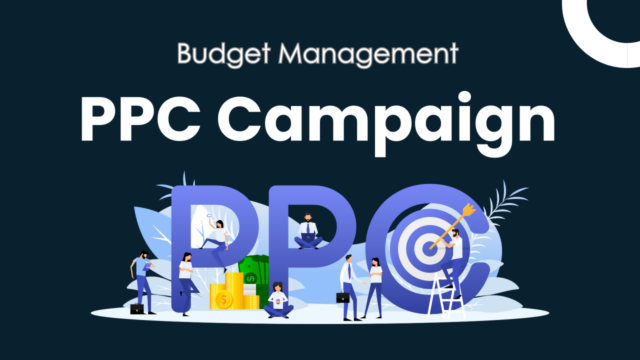Pay-per-click (PPC) advertising is a powerful tool for driving traffic, generating leads, and boosting sales. Whether you’re running ads on Google, Bing, or social media platforms, creating a successful PPC campaign requires strategy, research, and continuous optimization. In this guide, we’ll explore the key steps to crafting a PPC campaign that delivers results.

1. Set Clear Goals
Before launching any PPC campaign, it’s crucial to define your objectives. Are you looking to increase website traffic, generate leads, promote a new product, or boost brand awareness? Your goals will shape every aspect of your campaign, from keyword selection to ad design.
Examples of PPC Goals:
- Increase website traffic by 20% in 3 months.
- Generate 50 new leads for a specific service.
- Boost sales of a new product by 10% within a quarter.
2. Research Keywords Thoroughly
Keyword research is the backbone of any PPC campaign. To ensure your ads are seen by the right audience, you need to bid on relevant and high-intent keywords.
Tips for Keyword Research:
- Use tools like Google Keyword Planner, SEMrush, or Ahrefs to find relevant keywords.
- Focus on long-tail keywords for higher intent and less competition.
- Identify negative keywords to avoid wasting budget on irrelevant searches.
3. Craft Compelling Ad Copy
Your ad copy is what convinces users to click. It needs to be attention-grabbing, clear, and aligned with the user’s search intent.
Key Elements of Strong Ad Copy:
- Headline: Catch the user’s attention immediately with a benefit-driven or solution-focused headline.
- Description: Highlight your unique selling proposition (USP) and include a clear call-to-action (CTA).
- Display URL: Ensure the URL shown in the ad is relevant and user-friendly.
4. Optimize Landing Pages
A PPC ad is only as good as the landing page it directs to. If your landing page doesn’t provide a seamless and relevant experience, users will bounce, and your campaign ROI will suffer.
Best Practices for Landing Pages:
- Ensure the landing page matches the ad’s message and intent.
- Keep the page focused with a clear headline and CTA.
- Optimize for mobile devices.
- Include social proof, such as testimonials or case studies.
5. Set a Realistic Budget
PPC campaigns can quickly become expensive if not properly managed. Set a daily or monthly budget that aligns with your goals, and monitor spending closely.
Budgeting Tips:
- Start with a modest budget and increase as you see results.
- Allocate more budget to high-performing ads or keywords.
- Use bidding strategies like manual CPC (Cost Per Click) or maximize conversions based on your campaign goals.
6. Leverage Audience Targeting
To maximize the effectiveness of your PPC campaign, utilize audience targeting features. This ensures your ads are being shown to people who are more likely to convert.
Audience Targeting Options:
- Demographics: Target users based on age, gender, location, etc.
- Interests: Show ads to users who have shown interest in similar products or services.
- Remarketing: Target users who have previously interacted with your website but didn’t convert.
7. A/B Test Regularly
PPC success comes from continuous testing and optimization. A/B testing helps you identify what works best, whether it’s different headlines, descriptions, or CTAs.
What to A/B Test:
- Headlines and ad copy.
- CTA placement and wording.
- Landing page design and content.
- Target audience segments.
8. Monitor and Optimize Campaign Performance
Once your campaign is live, tracking and analyzing performance data is critical. Google Ads, for example, offers a wealth of information on metrics such as click-through rate (CTR), conversion rate, cost-per-click (CPC), and quality score.
Key Metrics to Track:
- CTR: Indicates how compelling your ad is.
- Conversion Rate: Measures how many clicks turn into leads or sales.
- CPC: Shows how much you’re paying for each click.
- Quality Score: Google’s rating of the relevance and quality of your ads and landing pages.
9. Use Ad Extensions
Ad extensions are a powerful tool to provide more information to users, increase your ad’s visibility, and boost click-through rates.
Popular Ad Extensions:
- Sitelink Extensions: Add extra links to your website within your ad.
- Callout Extensions: Highlight key benefits or features.
- Call Extensions: Include your phone number for direct contact.
- Location Extensions: Show your business location.
10. Stay Up to Date with PPC Trends
The PPC landscape is constantly evolving. New tools, algorithms, and trends emerge regularly, and staying informed can give you a competitive edge.
Current PPC Trends:
- AI-Powered Bidding: Automated bidding strategies using machine learning to maximize conversions.
- Voice Search: Optimizing campaigns for voice-activated search queries.
- Video Ads: Using platforms like YouTube for video PPC campaigns.
Conclusion
Creating a successful PPC campaign requires a combination of strategic planning, precise execution, and continuous optimization. By setting clear goals, conducting thorough research, and regularly monitoring performance, you can ensure your PPC efforts deliver maximum return on investment. Remember, PPC is not a “set it and forget it” strategy—constant refinement is the key to ongoing success.


No responses yet